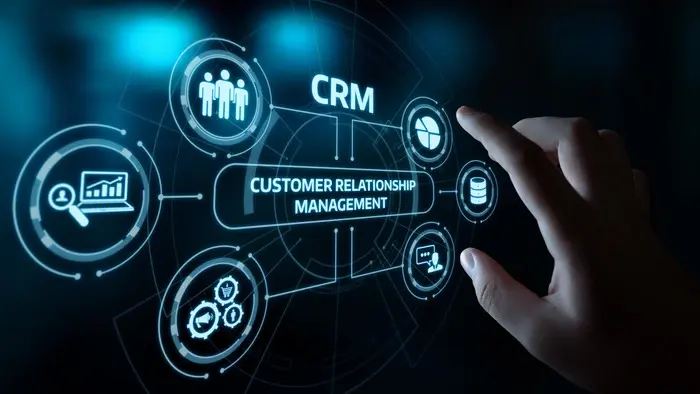Does Your Membership Director Have the Right Tools and Skills?
This blog was updated for relevance and accuracy on February 11, 2025.
4 min read
 Kathy Heil
:
February 11, 2020
Kathy Heil
:
February 11, 2020
In addition to selling new memberships, the Membership Director often has a variety of other responsibilities, such as member relations, communication, events, and so on. Because Membership Directors wear so many hats, it makes it almost impossible to devote 100% of their time to sales. With the right sales tools that can automate and simplify some of the common tasks, Membership Directors can achieve better results.
Watch our full Crushing Club Marketing Academy Webinar here:
Sign up for Crushing Club Marketing Academy for access to all of our webinars.
Sales enablement refers to the processes, information and technologies that help salespeople sell more effectively. Simplified, sales enablement leverages marketing strengths — creating and using processes, content and technology — to support sales efforts.
When a lead fills out a form on your website, more than 50% of the time they aren't going to be prepared to join right away. They still need to get to know you, understand your membership categories, and determine if you are a "right fit" club. Without having a plan to stay "top of mind" sales opportunities are slipping away. Here are some common challenges Membership Directors face that impact the effectiveness of closing more memberships.
It’s common for Membership Directors to come to clubs from other roles, perhaps from the hospitality industry, catering department, or another food and beverage position. So the folks responsible for selling may not have a great deal of sales experience and thus lack consistent, predictable, or defined sales processes.
A typical sales process in a club goes something like this:
Because most clubs don't use sales technology that can automate reminders and sending emails, the advancement of the sales process is often left up to the prospect.
It can be overwhelming for salespeople to determine which prospects they should be focusing their selling efforts on and which ones are just kicking the tires. It’s not uncommon for Membership salespeople to organize, track, and prioritize their leads using spreadsheets, color-coded folders, or email folders. While this may help with the organization of the leads, it’s also very time-consuming and provides limited insights into which prospects are the best prospects and deserve more attention.
Time is money, the saying goes. To make the most out of your “selling hours” having sales technology will ensure that your sales team is only talking to the most qualified leads.
The road to membership can take several weeks, months, or even years. When a lead turns unresponsive to follow-up calls or emails from the Membership team, it doesn't mean they won't one day become sales ready. WIth the right strategy and technology, you can send timely and engaging communications to stay top of mind and continue to build a relationship even when they appear unresponsive.
Manual tools make organizing and reporting on the sales process difficult and time consuming. Club boards want to know with some degree of certainty what the revenue forecast looks like. For example, they want to know how many members are going to join in the next 90 days. Unless the member application is in hand, it can be nearly impossible to answer that question.
Manual reporting makes it hard to understand how many leads are needed in order to reach annual revenue and new member goals. How many tours need to be scheduled to get 10 new members? How many leads are needed to schedule those tours? Where are the best leads coming from? Without answers to these questions, there is no way to understand ROI, and there is no data to guide marketing spending for maximum results.
Clubs are very familiar with operational technology platforms like Club Essential and Jonas Software. They are fundamental to day to day operations and member communications. As much as your operational teams rely on these platforms to effectively perform their jobs, your sales and marketing teams need specialized sales and marketing technology to maximize their sales results.
One of the most essential sales tools is having the right CRM to manage and track all the communication that occurs with a contact, regardless of the channel: website, referrals, walk-ins, social media, etc. All the communication is stored in one organized lead record, providing the salesperson with detailed knowledge about every interaction that’s occurred over time.
There is no “one-size-fits-all” tool set for your sales team. If you are looking for a better way to acquire, engage and retain members, consider investing in the right technology to align your sales and marketing efforts. When you do, you are practically guaranteed success!
One of our favorite sales platforms is absolutely free.
HubSpot CRM offers a state-of-the-art CRM completely free. It provides all the powerful functionality described above, as well as features to help capture new leads on your existing website. It is designed to work with existing website platforms, which means it doesn’t require any costly website changes to add this functionality.
There are also some terrific resources to help your marketing and sales teams take their professional skills to the next level with free, online training. Check out HubSpot Academy and Inbound Sales Certification.
Need a Digital Marketing tune-up for strategies to increase membership? Check out these free resources:

This blog was updated for relevance and accuracy on February 11, 2025.

Columbine Country Club, just outside of Denver, Colorado, experienced exponential growth over the last three years due to what, Director of Sales and...

Let’s be honest—would you play 18 holes with just a putter? Of course not. But when you manage your membership pipeline without a sales-focused CRM,...